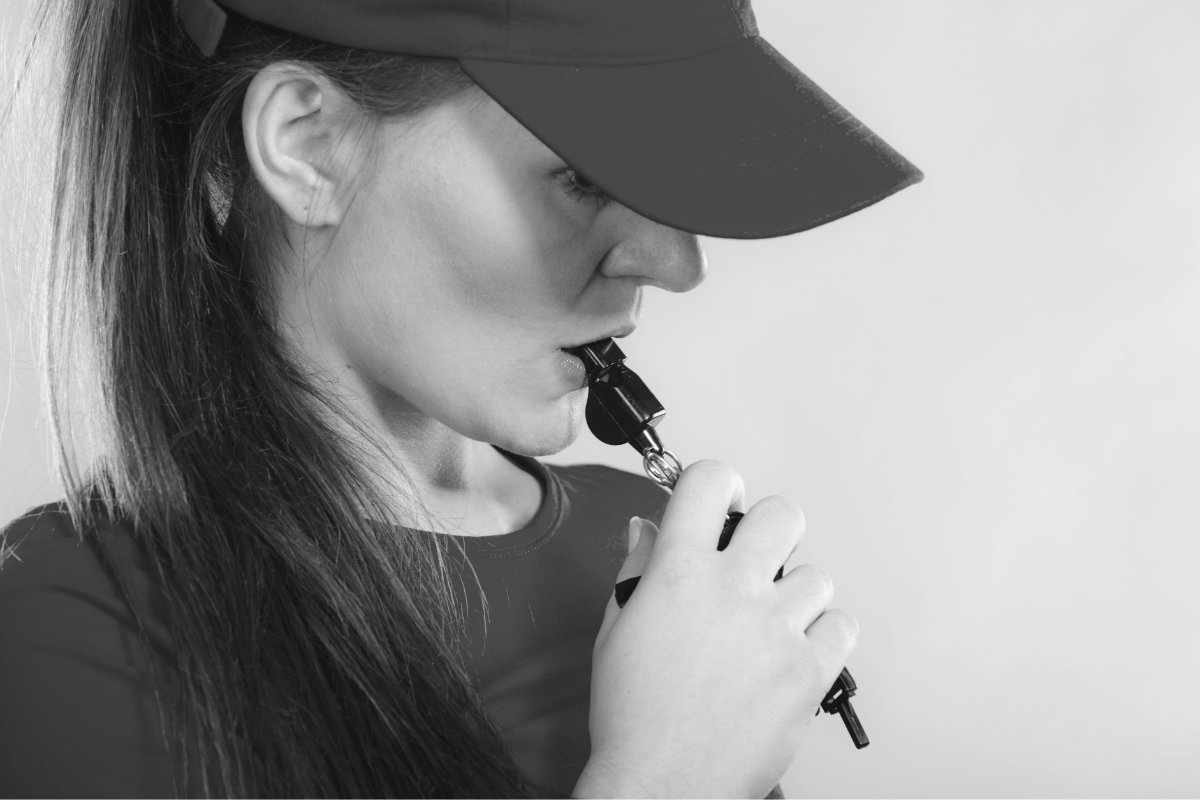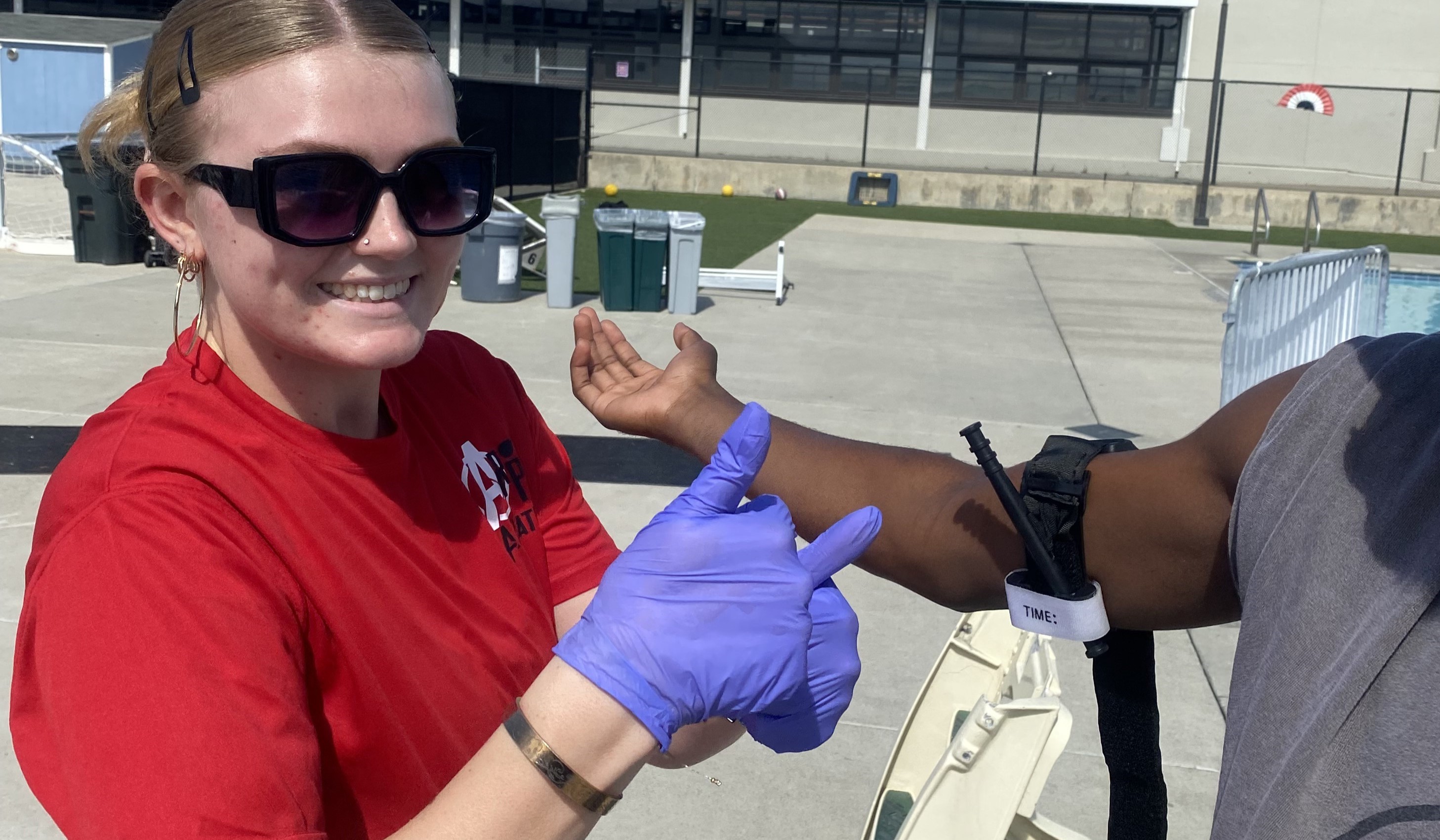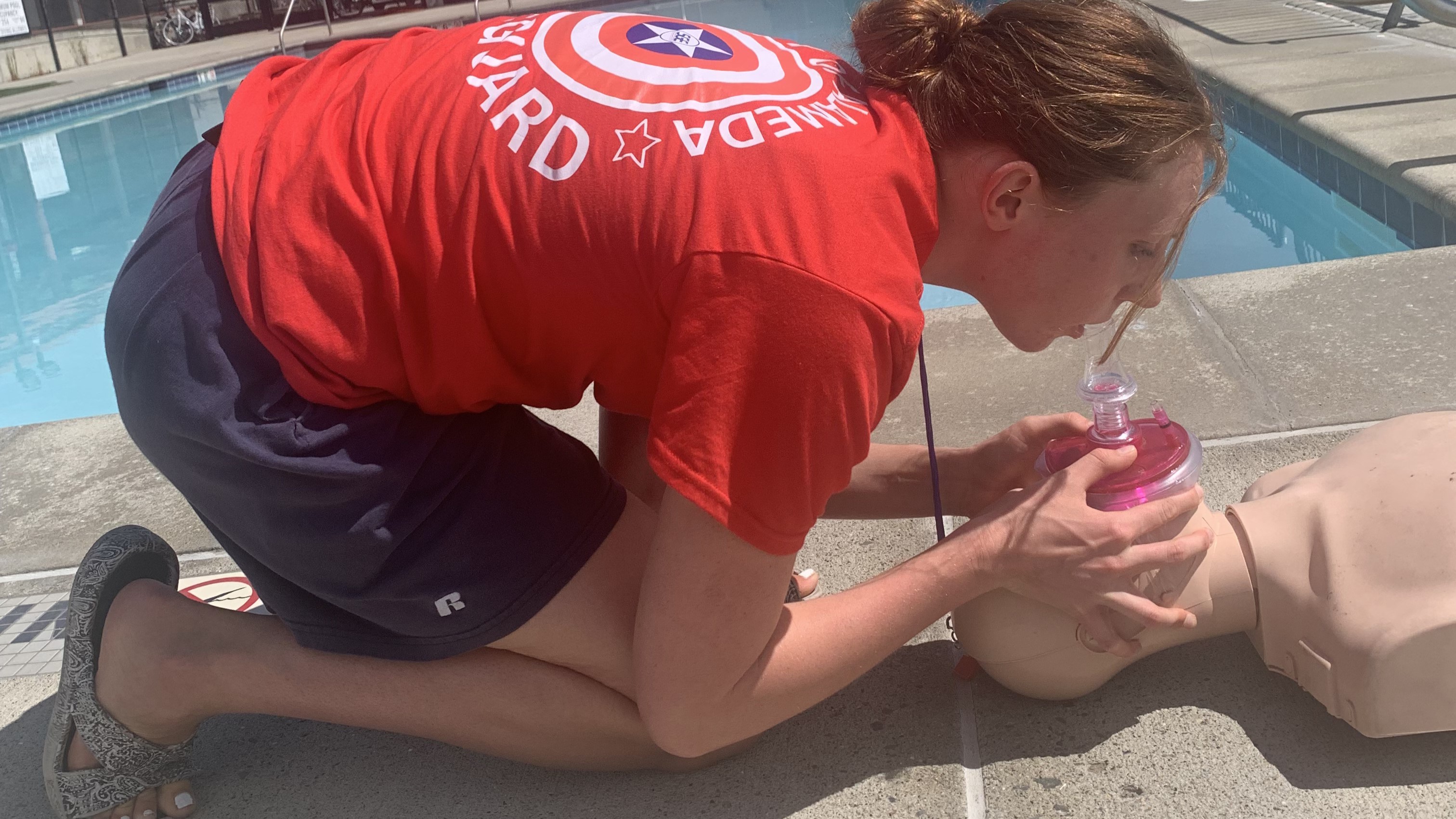If Hollywood took sexual harassment as seriously as the aquatics industry, its notorious offenders may have been ousted years ago. But without vigilant enforcement of a zero-tolerance policy, a culture of abuse and harassment flourished, resulting in a reckoning called the #MeToo movement.
It was a wake-up call that soon rattled industries outside moviemaking, forcing many to question whether their institutions aren’t also guilty of the same ugly behavior. Silicon Valley’s “bro culture” has been called into question, and construction and engineering fields now grapple with what ARCHITECT Editor-in-Chief Ned Cramer dubs a “men’s club” atmosphere.
And there’s no overlooking accusations leveled at some elite-level swim coaches, which predate #MeToo. On the periphery of the aquatics industry, these scandals come uncomfortably close to home for lifeguards, water-safety instructors and facility operators.
The good news: Aquatics professionals remain relatively unscathed in this watershed moment, with no groundswell of voices alleging rampant misconduct here. This despite the unique circumstance in which these professionals operate: Young people and seasoned professionals working side by side in their shorts and bathing suits with lots of physical contact during training.
That isn’t to say our industry is entirely guilt-free. Recent headlines focus on male lifeguards accused of such predatory behavior as filming underage female coworkers in their locker room. The lesson: No matter how airtight your screening process may be, creeps have a knack for slipping through any cracks.
Here, experts share proven methods for closing those gaps — keeping staff behavior in check and predators out of the pool.
It starts with the application
Unfortunately, some predators gravitate toward aquatics because it provides opportunities to work hands-on with children and young lifeguards.
Before staffing up for the season, consider adding language to your application form that could discourage someone who wants the job for the wrong reasons. A statement outlining the facility’s policies on abuse prevention could serve as a red flag for potential criminals.
“If … they have several different organizations they’re looking at, [and] you show how seriously you’re going to take this, it might deter them from going to your organization,” advises Gareth Hedges, president of The Redwoods Group, insurance partner of the YMCA.
An ill-intentioned individual looking for work at the YMCA might think twice after reading this statement on the organization’s application, which reads in part: “We structure our programs so that no staff member or volunteer is left alone with a child or other vulnerable individual. We try to prevent any opportunity for abuse and we periodically interview children and others about their experiences in the program. We take all allegations, including those from children, very seriously. We refer all allegations to the authorities for investigation, and we cooperate fully with any investigation. Wrongdoers need to know that this is a very risky place to attempt to abuse children or the vulnerable.”
Tighten your screening process
Background checks can raise red flags, but they only go so far. Often, when a minor commits a crime, the records are sealed. This can complicate matters when an applicant has a history of sexual abuse.
The first indications of deviant tendencies begin at a fairly young age. So if a sexual predator were formally charged at, say, 15, there would be no way for a recruiter to know. That’s why Hedges recommends that employers ask candidates for personal references, including close family members, particularly the applicant’s mother.
Ninety-nine times out of 100, you’ll get a glowing review. But it’s the exception you’re trying to screen out.
Generally, the mother is aware that her son or daughter has a history of abusive behavior. While she won’t outright say as much, she might suggest her child isn’t a good fit for other reasons — he’s ill-tempered or doesn’t work well with children, for example.
Discouraging the recruiter is in the mother’s best interest. “They’re trying to protect their child,” Hedges says. “They don’t want them to be in that kind of position.”
Make a presentation — and make it matter
Nothing induces teenage eye rolling like a mandatory meeting on sexual harassment. But gathering hundreds of teens and young adults to discuss workplace etiquette does not have to be an exercise in tedium.
There is a way to tailor these presentations so new recruits actually learn. As executive director of the Association of Aquatic Professionals, Juliene Hefter delivers presentations on this topic to lifeguards nationwide.
The key, she says, is to know your audience.
Her training sessions are more engaging for young adults — not simply a dry overview of workplace policy.
“Most communities do a canned presentation for every employee in every department, and it loses some of the importance when you’re talking to kids in a certain situation,” Hefter says.
She addresses the topic using scenarios lifeguards could potentially experience themselves. Example: “You look good in that bathing suit today,” and “Lookin’ goooood in that bathing suit!” One is a harmless compliment. The other has obvious connotations.
Becky Hulett takes the same approach.
She hires 500-plus lifeguards each season as the aquatics supervisor for the City of Phoenix Parks and Recreation. To address an uncomfortable topic, she kicks off meetings with a little comic relief in the form of an animated short about an amorous skunk. It turns out, there’s a lot to glean about sexual harassment from a Pepe Le Pew cartoon.
“It’s a hard topic to talk about, but it’s … something to look at and laugh and say, ‘OK, I can relate to that and I understand what that means,’” Hulett says.
While employee handbooks should have a section addressing sexual harassment, presentations supplement that information by giving recruits an opportunity to ask questions and clarify areas of confusion. There are ways to accomplish this while having more fun than a standard Q and A.
Hulett augments her presentation to supervisors with a game of Kahoot!, a learning and trivia platform that allows her staff to respond to questions, anonymously, via smartphone. Based on their responses, she can see where her audience needs clarification.
Defining harassment
In the workplace, sexual harassment involves gray areas more often than it does the overt examples outlined in the press.
Many say that the most common example occurs when harmless flirting or joking crosses the line. To a large extent, whether that has happened depends mostly on the target of the remark.
“It’s really a matter of perception,” Hefter says.
If someone is offended, that person needs to address it immediately. “If you say, ‘Listen, you’re making me feel uncomfortable. Don’t do that anymore,’ and they stop, great,” Hefter says. “If they don’t stop, that’s when you need to take it to the next level.”
This is when lifeguards need to follow a chain of command. In Hulett’s case, before a formal complaint reaches her, the lifeguard must first notify the manager. If the harassing continues, the victim can then bring his or her concerns to the lifeguard coordinator.
“They have three different options before they have to go to HR,” Hulett says.
While Hulett becomes aware of the situation the moment it’s reported to a manager, it’s often diffused long before she has to intervene.
In most cases, it’s a simple misunderstanding or a mutual disrespect between two guards who don’t get along. In those cases, they may be assigned to different pools or shifts. Rarely is it anything that qualifies as sexual harassment.
“When we truly see sexual harassment, we don’t tolerate it,” Hulett says.
But what is zero tolerance?
In Hedges’ view, a zero-tolerance policy means no infraction goes unreported.
Staff should be trained to notify a superior when they observe any type of violation. This is especially important when it comes to identifying child predators. As a rule, these individuals are rarely caught in the act of abusing a student or trainee. Instead, you’re more likely to catch them violating company policy, Hedges says.
Predatory instructors or coaches, for instance, will use tactics to break down the boundaries between themselves and the student. These typically include roughhousing, hugging, giving gifts, showing favoritism and initiating one-on-one time.
That’s why a facility should institute and explain very clear policies on how staff should interact with students. Some obvious no-no’s: A swim instructor should never spend time with a child alone. They should never accept requests to babysit. They should never transport a child alone in a car. If they have to speak privately with a student, they should do it in an open forum — never behind closed doors. There should never be any electronic communication between them, either.
In a workplace with strict guidelines, breaches rarely go unnoticed. “Zero tolerance means nothing goes unaddressed,” Hedges says. “It’s seen, it’s reported and dealt with.”
That means disciplinary action, which could lead all the way to immediate termination.
In contrast, if staff and supervisors overlook minor offenses — unnecessary physical contact, heaping loads of attention on one particular child — the predator will continue to push his or her luck and normalize this type of behavior, Hedges cautions.
The not-so-simple solution
There is one quick change that could help curb unwanted attention, whether from guests or fellow lifeguards: Provide female staffers with modest attire.
Unfortunately, this is becoming increasingly difficult as vendors produce more two-piece suits. Even the one-piece is becoming slimmer with deeper cuts, tailored to the athletic swimmer.
“I have 500 people I have to give a uniform to, and that’s a lot of different body shapes,” Hulett says.
City-issued bathing suits are supposed to cover everything, but “that’s definitely a challenge with what’s provided in the industry.”
Hefter agrees that bathing suits are showing more skin than before. “They’re wearing pretty tiny bikinis as lifeguards,” she says, adding that such attire can send the wrong signal. “What that tells me is, you’re there for a tan.”
That’s why Hulett allows female lifeguards to wear a T-shirt, provided by the city, over their suits. She eventually wants to offer uniform swimming trunks, as well. Until she gets that in the budget, however, her guards can wear their own shorts.
#MeToo’s ripple effect
#MeToo did more than expose Hollywood’s ugly, abusive power structure; it started a long-overdue national conversation about the quiet indignities many women suffer all too frequently. It’s also empowered them to speak up.
Hopefully, it’s creating an environment like you’d find at any one of Hulett’s 29 swimming pool facilities. She joined the City of Phoenix as a lifeguard in 1993. Back then, there was some confusion about what the term sexual harassment even meant. Seldom a summer would go by without a true allegation of misconduct.
“It used to be that there was always one,” Hulett says. “But there hasn’t been since probably 2009.”
There are two main reasons for this. One is an ever-evolving prevention program that seems to stop abuse in its tracks. Over the years, Hulett has impressed upon her staff the severity of this issue; she has crystallized what is and is not acceptable in the workplace; and she has equipped staffers at all levels with the confidence to bring concerns to their superiors.
“We’re creating a place for these employees that is safe for them to come and tell us this is an issue,” she says. “There are no repercussions if they report.”
But perhaps the most encouraging reason she gives is this: The current generation keeping watch over her pools is an emboldened one, not afraid to blow the whistle on bad behavior.



